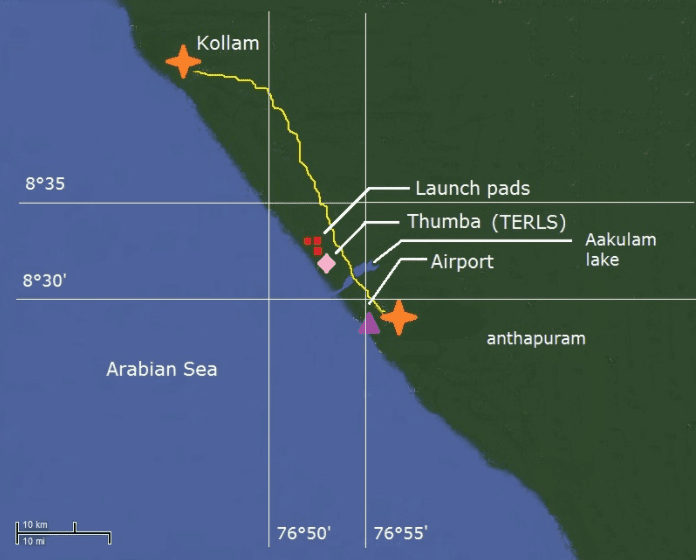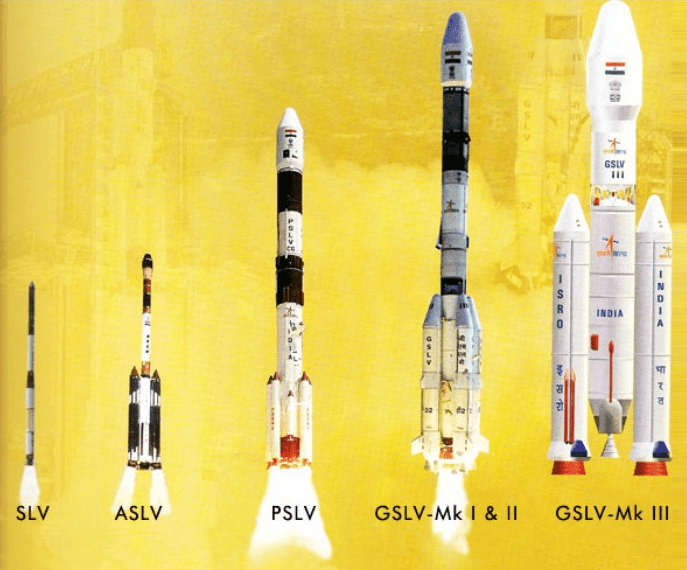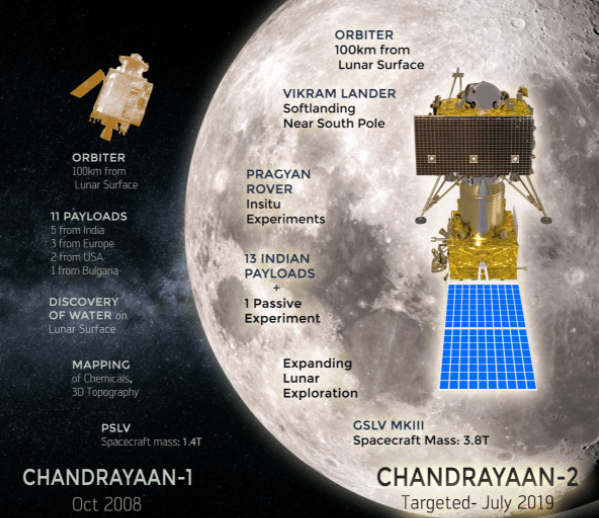Satellite Programmes | Science & Technology for UPSC CSE PDF Download
Genesis of Indian Space Programme
The space research activities were initiated in India during the early 1960’s, when applications using satellites were in experimental stages even in the United States. With the live transmission of Tokyo Olympic Games across the Pacific by the American Satellite ‘Syncom-3’ demonstrating the power of communication satellites, Dr. Vikram Sarabhai, the founding father of Indian space programme, quickly recognized the benefits of space technologies for India.
As a first step, the Department of Atomic Energy formed the INCOSPAR (Indian National Committee for Space Research) under the leadership of Dr. Sarabhai and Dr. Ramanathan in 1962. The Indian Space Research Organisation (ISRO) was later formed on August 15, 1969. The prime objective of ISRO is to develop space technology and its application to various national needs. It is one of the six largest space agencies in the world. The Department of Space (DOS) and the Space Commission were set up in 1972 and ISRO was brought under DOS on June 1, 1972.
Since inception, the Indian space programme has been orchestrated well and had three distinct elements such as, satellites for communication and remote sensing, the space transportation system and application programmes. Two major operational systems have been established – the Indian National Satellite (INSAT) for telecommunication, television broadcasting, and meteorological services and the Indian Remote Sensing Satellite (IRS) for monitoring and management of natural resources and Disaster Management Support.
Major milestones in Indian Space Programme
- Indian Space Programme began at Thumba Equatorial Rocket Launching Station (TERLS) located at Thumba near Thiruvananthapuram. Thumba was selected for being rocket launching station because geomagnetic equator of the earth passes over Thumba. The geomagnetic equator of the earth passes over Thumba.
 TERLS - Thumba
TERLS - Thumba - On November 21, 1963, the first sounding rocket was launched from TERLS. The first rocket, a Nike-Apache was procured from the US. A sounding rocket is a rocket, which is intended for assessing the physical parameters of the upper atmosphere.
- The Satellite Telecommunication Earth Station was set up at Ahmedabad on January 1, 1967.
- India’s first indigenous sounding rocket, RH-75, was launched on November 20, 1967.
- Aryabhata - First Indian Satellite was launched on April 19, 1975. It was launched from the former Soviet Union. It provided India with the basis of learning satellite technology and designing.
- During 1975-76, ISRO along with NASA developed means of using space communications system for TV broadcasting. This resulted in the creation of the project Satellite Instructional Television Experiment (SITE). It was a one-year program covering Indian villages and districts. The main purpose of SITE was to experiment usage of satellite broadcasting to educate the masses. SITE, hailed as ‘the largest sociological experiment in the world’ benefited around 200,000 people, covering 2400 villages of six states and transmitted development oriented programmes using the American Technology Satellite (ATS-6).
- During January 1, 1977 — January 1, 1979, Satellite Telecommunication Experiments Project (STEP), a joint project of ISRO-and Post and Telegraphs Department (P&T) using the Franco-German Symphonie satellite was taken up. Conceived as a sequel to SITE which focused on Television, STEP was for telecommunication experiments.
- Bhaskara-I - an experimental satellite for earth observations was launched on June 7, 1979.
- First Experimental launch of SLV-3 with Rohini Technology Payload on board (August 10, 1979). Satellite could not be placed in orbit. Satellite Launch Vehicle-3 (SLV-3) is the first launch vehicle of India.

- Second Experimental launch of SLV-3, Rohini satellite successfully placed in orbit. (July 18, 1980).
- Ariane Passenger Payload Experiment (APPLE), an experimental geo-stationary communication satellite was successfully launched on June 19, 1981. It became the forerunner for future communication satellite system.
- Indian National Satellite system (INSAT)-1A was launched on April 10, 1982. This system was for the communication, broadcasting and meteorology.
On April 2, 1984, the first Indo-Soviet manned space mission was launched. Rakesh Sharma became the first Indian citizen to go into space. He flew aboard in the Soviet rocket Soyuz T-11, as part of a three member Soviet-Indian crew.
The first operational Indian Remote Sensing Satellite, IRS-1A was launched on March 17, 1988.
- On March 24, 1987, the first developmental launch of Augmented Satellite Launch Vehicle (ASLV) that supported a larger payload than the SLV-3 and was meant to be low-cost happened.
- Launch of first operational Indian Remote Sensing Satellite, IRS-1A happened on March 17, 1988.
- Second developmental launch of Polar Satellite Launch Vehicle (PSLV) with IRS-P2, on board took place on October 15, 1994. Satellite successfully placed in Polar Sun synchronous Orbit. PSLV went on to become a favoured carrier for satellites of various countries due to its reliability and cost efficiency, promoting unprecedented international collaboration.
- The first developmental launch of Geosynchronous Satellite Launch Vehicle (GSLV)-D1 with GSAT-1 on board took off from Sriharikota on April 18, 2001. It was developed keeping in mind the heavier and more demanding Geosynchronous communication satellites.
- INSAT-4CR weighing 2130 kg and launched by GSLV-F04 on September 2, 2007 is the heaviest satellite launched from India.
- PSLV-C11 successfully launches CHANDRAYAAN-1 from Sriharikota on October 22, 2008. Chandrayaan-1 is a scientific investigation – by spacecraft – of the Moon. The name Chandrayaan means “Chandra- Moon, Yaan-vehicle”, –in Indian languages (Sanskrit and Hindi) , – the lunar spacecraft. Chandrayaan-1 is the first Indian planetary science and exploration mission. Chandrayaan-1 was operational for 312 days till August 28, 2009.
- November 5, 2013 - PSLV - C25 successfully launches Mars Orbiter Mission (Mangalyaan) Spacecraft from Sriharikota.
- On February 15, 2017, PSLV-C37, the 39th mission of the workhorse launch vehicle of ISRO, injected ISRO’s Cartosat-2 Series Satellite weighing 714 kg and two ISRO Nano-satellites namely INS-1A (8.4 kg) & INS-1B (9.7 kg) and 101 Nano-satellites, from six foreign countries into a Sun-Synchronous Orbit (SSO) at an orbit of 506 km above earth, with an inclination of 97.46°. The mass of nano-satellites varied from 1 to 10 kg. The total weight of all the 104 satellites carried on-board PSLV-C37 was 1378 kg.
- PSLV-C38/Cartosat-2 Series Satellite Mission was launched on June 23, 2017 from SDSC SHAR, Sriharikota.India's Polar Satellite Launch Vehicle, in its 40th flight (PSLV-C38), launched the 712 kg Cartosat-2 series satellite for earth observation and 30 co-passenger satellites together weighing about 243 kg at lift-off into a 505 km polar Sun Synchronous Orbit (SSO).
- India's latest communication satellite, GSAT-17 was inducted into the INSAT/GSAT system on June 29, 2017 from Kourou, French Guiana by Ariane-5 VA-238. Weighing 3477 kg at lift-off, GSAT-17 carries Payloads in Normal C-band, Extended C-band and S-band to provide various communication services. GSAT-17 also carries equipment for metereological data relay and satellite based search and rescue services being provided by earlier INSAT satellites.
- India's Polar Satellite Launch Vehicle, in its forty second flight (PSLV-C40), successfully launched the 710 kg Cartosat-2 Series Satellite for earth observation and 30 co-passenger satellites together weighing about 613 kg at lift-off. PSLV-C40/Cartosat-2 Series Satellite Mission was launched on Friday, Jan 12, 2018.
GSLV-F08 is the 12th flight of Geosynchronous Satellite Launch Vehicle (GSLV) and Sixth flight with indigenous Cryogenic Stage. GSLV -F08 / GSAT-6A Mission was launched on Thursday, March 29, 2018. - India's Polar Satellite Launch Vehicle, in its forty-third flight (PSLV-C41) in XL configuration launched IRNSS-1I Satellite. The 'XL' configuration of PSLV is used for the twentieth time.
- The IRNSS-1I is the eighth satellite to join the NavIC navigation satellite constellation and was launched on April 12, 2018.
- PSLV-C42 Successfully Launches two foreign satellites from Satish Dhawan Space Centre (SDSC), SHAR, Sriharikota on September 16, 2018. This mission was designed to launch two earth observation satellites, NovaSAR and S1-4 (together weighing nearly 889 kg).
- PSLV-C43 lifted off on November 29, 2018 from the First Launch Pad (FLP) of Satish Dhawan Space Centre SHAR, Sriharikota and successfully launched India’s Hyper spectral Imaging Satellite (HysIS) and 30 international co-passenger satellites.
- India’s next generation high throughput communication satellite, GSAT-11 was successfully launched on December 05, 2018 from Kourou launch base, French Guiana by Ariane-5 VA-246. Weighing about 5854 kg, GSAT-11 is the heaviest satellite built by ISRO.
- GSLV-F11 successfully launched GSAT-7A, ISRO’s 39th communication satellite, on December 19, 2018 from Satish Dhawan Space Centre SHAR, Sriharikota. GSLV-F11 is the 13th flight of India’s Geosynchronous Satellite Launch Vehicle (GSLV) and its 7th flight with indigenous Cryogenic Upper Stage (CUS). GSLV – F11 is ISRO’s fourth generation launch vehicle with three stages. It is a geostationary satellite carrying communication transponders in Ku-band. The Satellite is built to provide communication capability to the users over the Indian region.
- Gaganyaan Programme - Cabinet has approved Indian Human Spaceflight Initiative - Gaganyaan Programme. Two unmanned & one manned flight has been planned. Estimates for Phase-I expenditure- Rs 9023 Crores. Gaganyaan Programme will establish a broader framework for collaboration between ISRO, academia, industry, national agencies and other scientific organizations.
- India’s telecommunication satellite, GSAT-31 was successfully launched on February 06, 2019 from Kourou launch base, French Guiana by Ariane-5 VA-247.
- India’s PSLV-C46 successfully launched RISAT-2B satellite from Satish Dhawan Space Centre (SDSC) SHAR, Sriharikota on May 22, 2019. The satellite is intended to provide services to Agriculture, Forestry and Disaster Management domains.
 Chandrayaan-2
Chandrayaan-2 - Geosynchronous Satellite Launch Vehicle, GSLV MkIII-M1 rocket, carrying Chandrayaan-2 spacecraft was launched from the Satish Dhawan Space Centre, Sriharikota in Andhra Pradesh on July 22, 2019. Chandrayaan-2 is India's second mission to the moon. It comprises a fully indigenous Orbiter, Lander (Vikram) and Rover (Pragyan). The Rover Pragyan is housed inside Vikram lander. Chandrayaan-2 has several science payloads to facilitate a more detailed understanding of the origin and evolution of the Moon. To know more about Chandrayan 2, click here.
- India’s PSLV-C47 successfully launched Cartosat-3 and 13 commercial nanosatellites from Satish Dhawan Space Centre (SDSC) SHAR, Sriharikota on November 27, 2019.
Recent Developments
1. NISAR Satellite
- Launch: ISRO–NASA’s joint mission NISAR was successfully placed into a sun-synchronous orbit using GSLV-F16, the first such mission for this rocket.
- Breakthrough: It carries the world’s first SweepSAR system, operating in L-band and S-band, enabling high-resolution radar imaging of Earth even under cloud cover.
- Progress: The 12-metre reflector antenna has been fully deployed, activating its full imaging capability.
2. Heavy U.S. Satellite Launch Planned
Following NISAR’s success, ISRO is gearing up to launch a 6,500 kg U.S. communication satellite within the next few months, marking a significant leap in its commercial capabilities.
3. New Launch Pad at Sriharikota
ISRO’s third launch pad at Satish Dhawan Space Centre is under construction and expected to be operational by March 2029, supporting future mission scalability.
4. Gaganyaan Programme Updates
- ISRO has declared 2025 as “Gaganyaan Year.”
- The first uncrewed mission (G1) with humanoid robot Vyommitra is scheduled within the year.
- The parachute recovery system has already been validated through an Integrated Air Drop Test, with successful capsule recovery.
5. Robotic Launching Milestone by Skyroot Aerospace
Skyroot Aerospace successfully test-fired the Kalam‑1200, its largest solid booster for the Vikram‑1 rocket—signaling India’s growing private sector presence in space. The maiden orbital launch is expected later in 2025.
6. Space Station Collaboration & Plans
The proposed Bharatiya Antariksh Station (BAS) is in advanced design stages. The first module (BAS‑1) is slated for launch by 2028, with full completion by 2035.
The European Space Agency (ESA) will assist with cargo delivery and docking systems under a new collaboration agreement.
7. Defense Space Expansion
India has sanctioned a 52-satellite military surveillance constellation (SBS‑III) worth over ₹26,968 crore, to be launched between 2025–29; ISRO will launch the first 21, followed by private players. A related military space doctrine is underway.
8. Private Sector Momentum
Axiom Space (USA) is expanding its collaboration with India in human spaceflight and space station development, building on the success of Indian astronaut Shubhanshu Shukla’s Axiom‑4 mission.
9. Space Tech Center in Bengaluru
The Karnataka government has approved a ₹10 crore Centre of Excellence in Bengaluru to advance satellite manufacturing, AI-based communications, Earth observation, and other space tech fields.
|
91 videos|488 docs|209 tests
|
FAQs on Satellite Programmes - Science & Technology for UPSC CSE
| 1. What is the genesis of the Indian Space Programme? |  |
| 2. What are the satellite programmes of the Indian Space Programme? |  |
| 3. How has the Indian Space Programme contributed to national development? |  |
| 4. What are the key achievements of the Indian Space Programme? |  |
| 5. How does the Indian Space Programme compare to other space programs globally? |  |
















